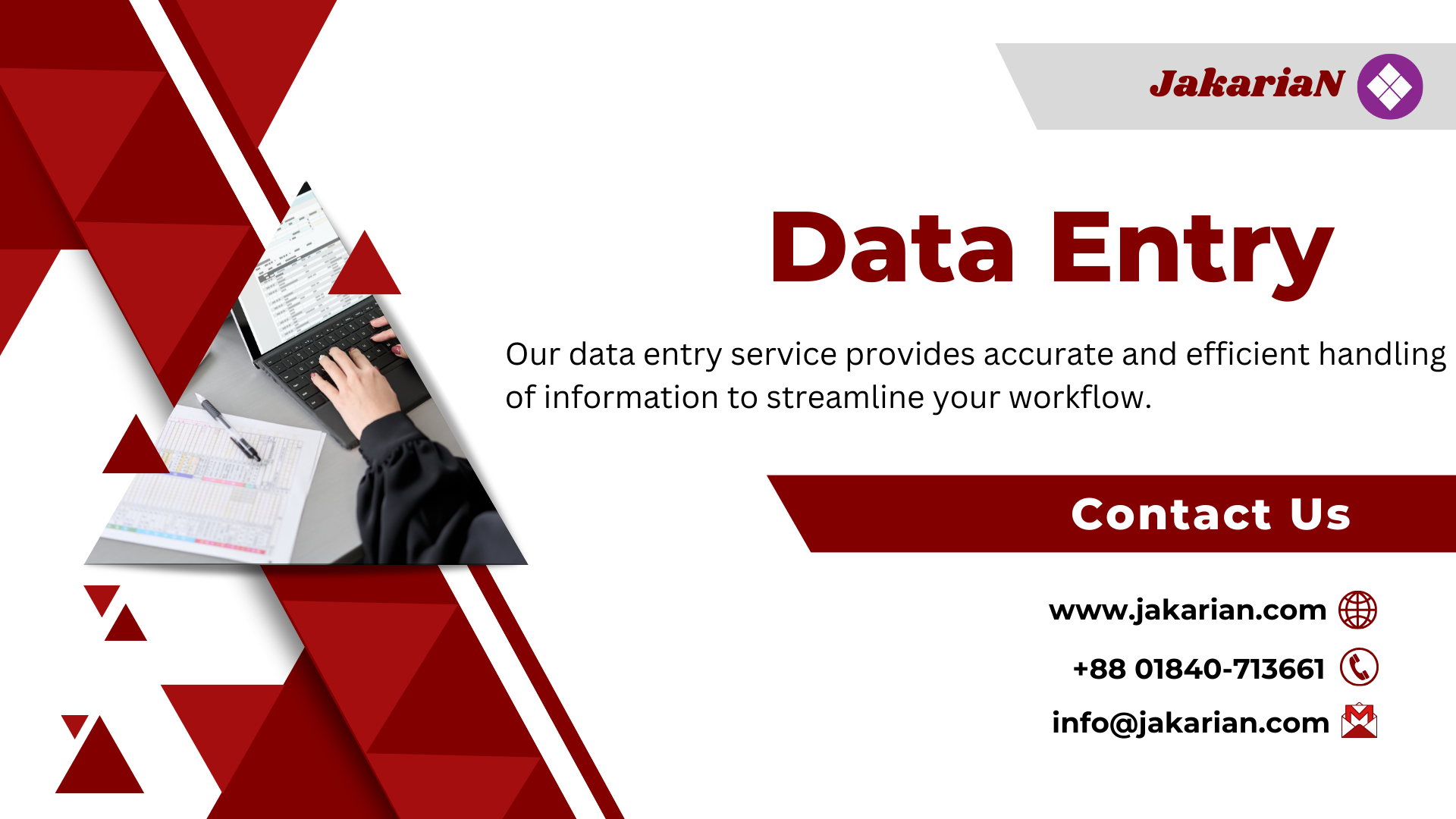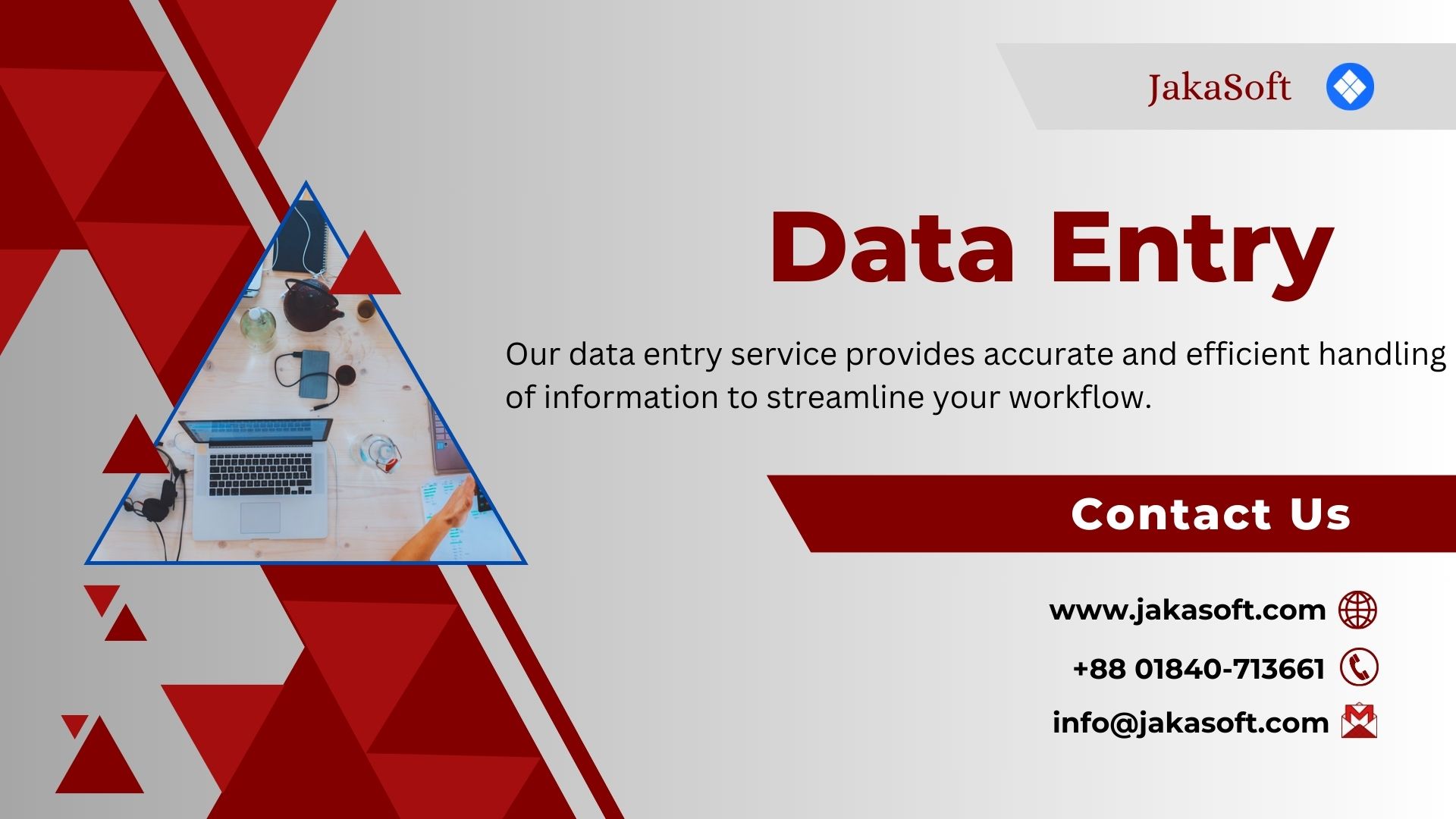Data Entry
Data Entry involves the accurate and efficient inputting, updating, and managing of various types of data into digital systems or databases. This service is essential for businesses and organizations that require meticulous record-keeping and data organization. Key aspects of Data Entry include:
1. Data Collection and Input:
- Manual Data Entry: Inputting data from physical documents, forms, or spreadsheets into digital formats, ensuring accuracy and consistency.
- Digital Data Entry: Transferring data from one digital format to another, such as from scanned documents, emails, or online forms into databases or software systems.
2. Data Verification and Validation:
- Accuracy Checks: Reviewing entered data to ensure it matches the original source material, correcting any errors or discrepancies.
- Data Validation: Ensuring the data entered adheres to predefined formats, rules, and standards to maintain data integrity and quality.
3. Database Management:
- Database Updating: Regularly updating and maintaining databases with new entries, edits, or deletions as needed.
- Data Organization: Organizing data into categories, tables, or fields that make it easy to retrieve and analyze.
4. Handling Confidential Information:
- Data Security: Managing sensitive and confidential information with strict adherence to data protection and privacy regulations.
- Access Control: Ensuring that only authorized personnel have access to specific data, protecting it from unauthorized access or breaches.
5. Speed and Efficiency:
- Timely Completion: Performing data entry tasks quickly without compromising accuracy, meeting deadlines for data entry projects.
- Batch Processing: Handling large volumes of data efficiently by processing it in batches, optimizing workflow and productivity.
6. Software Proficiency:
- Use of Data Entry Tools: Proficiency in using various data entry software, spreadsheets, databases, and content management systems (CMS) to input and manage data.
- Automation Tools: Utilizing automation tools for repetitive data entry tasks, reducing manual effort and minimizing errors.
7. Reporting and Documentation:
- Generating Reports: Producing detailed reports based on entered data, providing insights, summaries, or statistics as required.
- Record Keeping: Maintaining comprehensive records of data entry activities, ensuring transparency and accountability.
Data Entry is crucial for maintaining organized, accessible, and accurate records, supporting decision-making processes, and ensuring smooth business operations. Whether it involves entering customer information, financial data, product details, or any other type of information, effective data entry contributes to the overall efficiency and success of an organization
Compare Our Packages
| No | Package | Basic | Standard | Premium |
|---|---|---|---|---|
| 01 | Description | |||
| 02 | Title optimization | |||
| 03 | ||||
| 04 | ||||
| 05 | ||||
| 06 | ||||
| 05 | ||||
| 06 | ||||
| 07 | ||||
| 08 | ||||
| 09 | ||||
| 10 | ||||
| 11 | ||||
| 12 | ||||
| 13 | ||||
| 14 | ||||
| 15 | ||||
| 16 | ||||
| 17 | ||||
| 18 | ||||
| 19 | ||||
| 20 |






